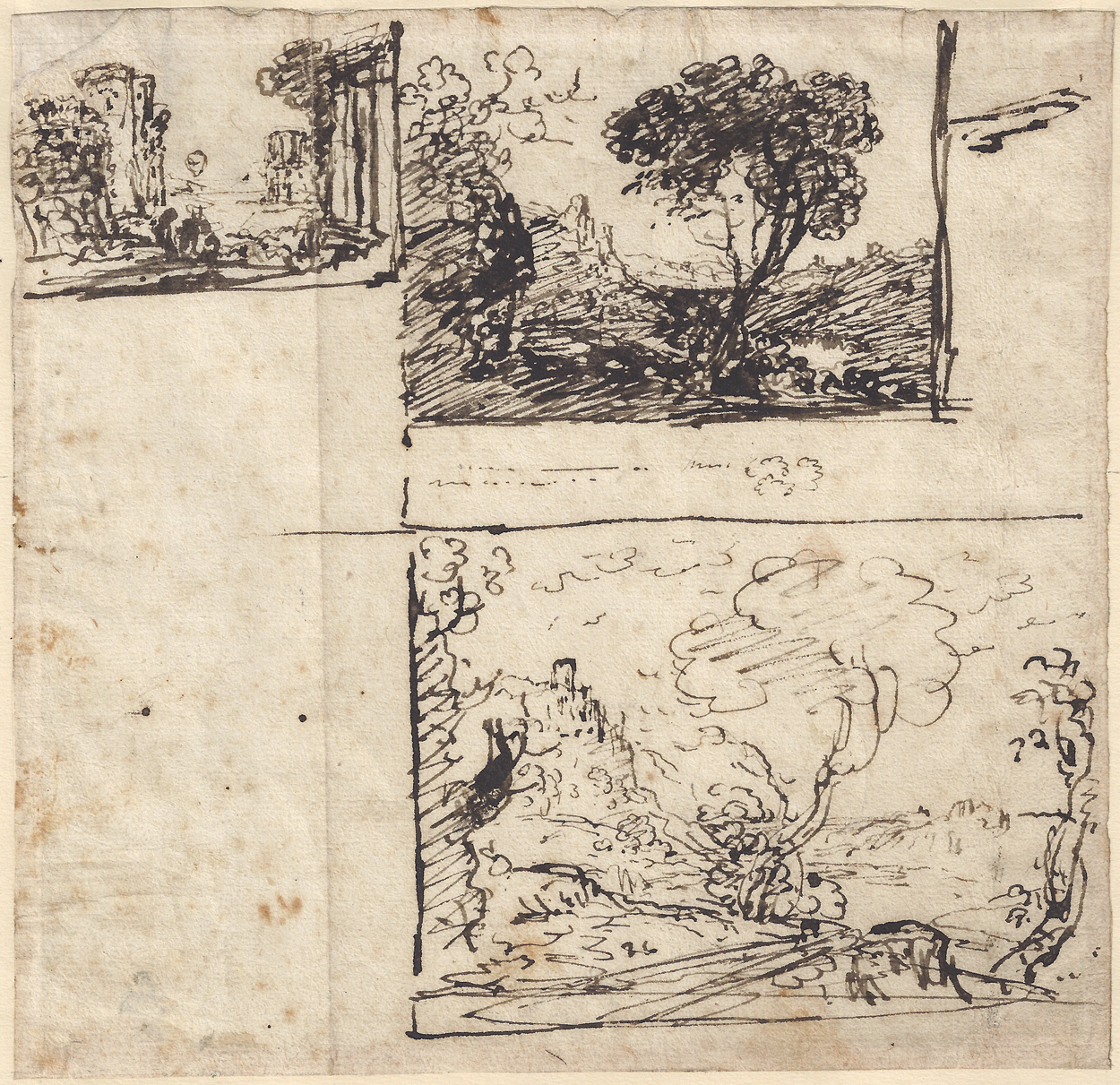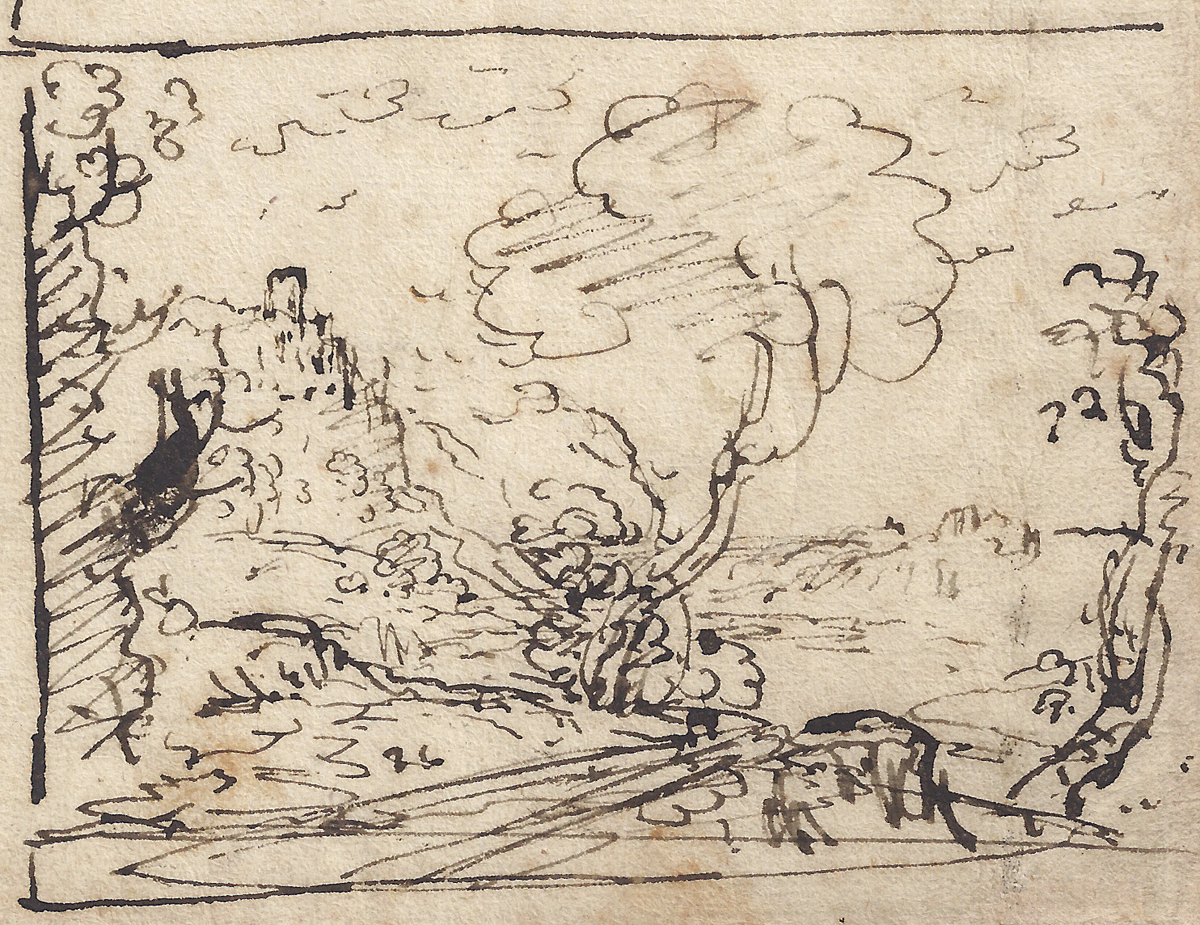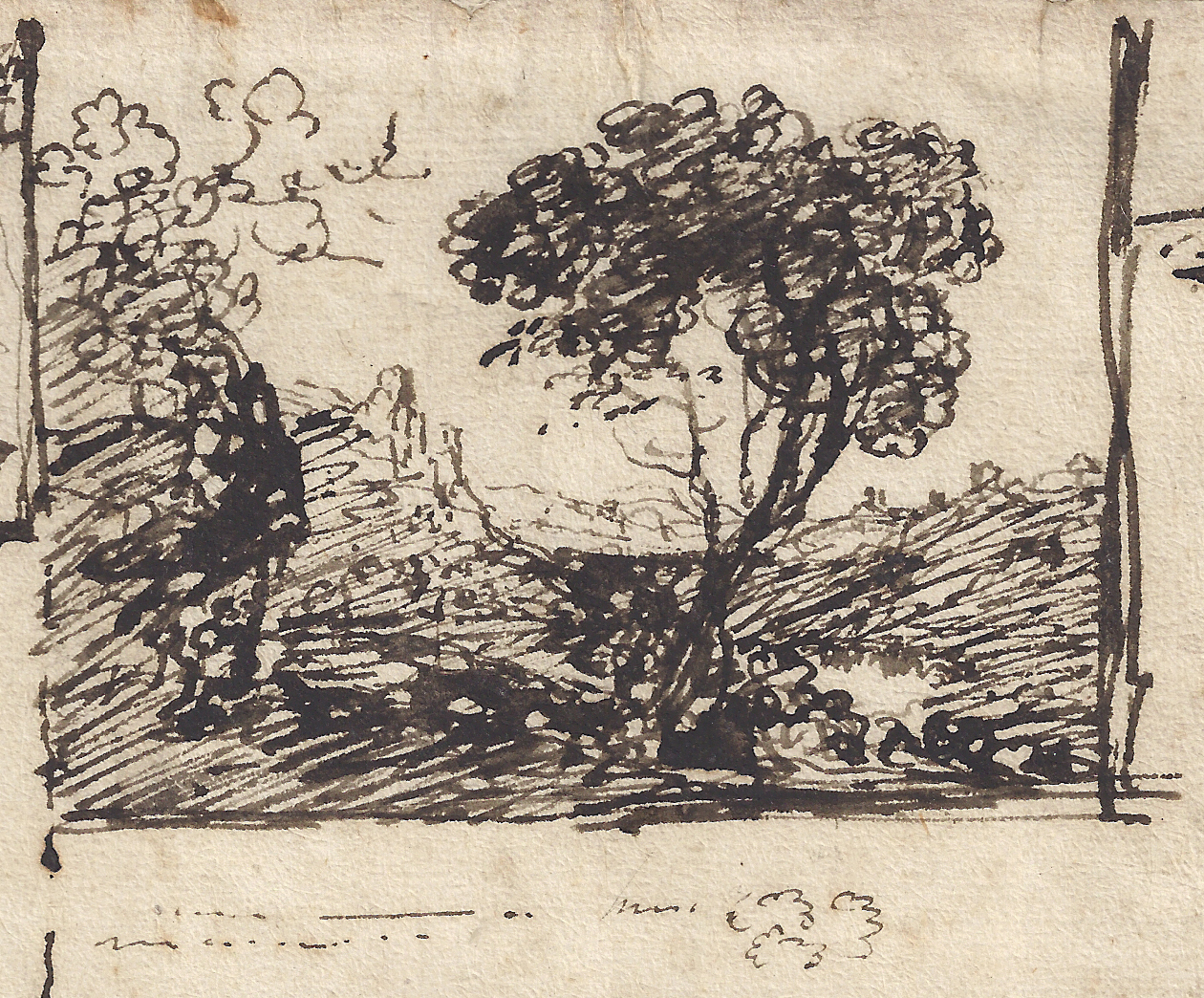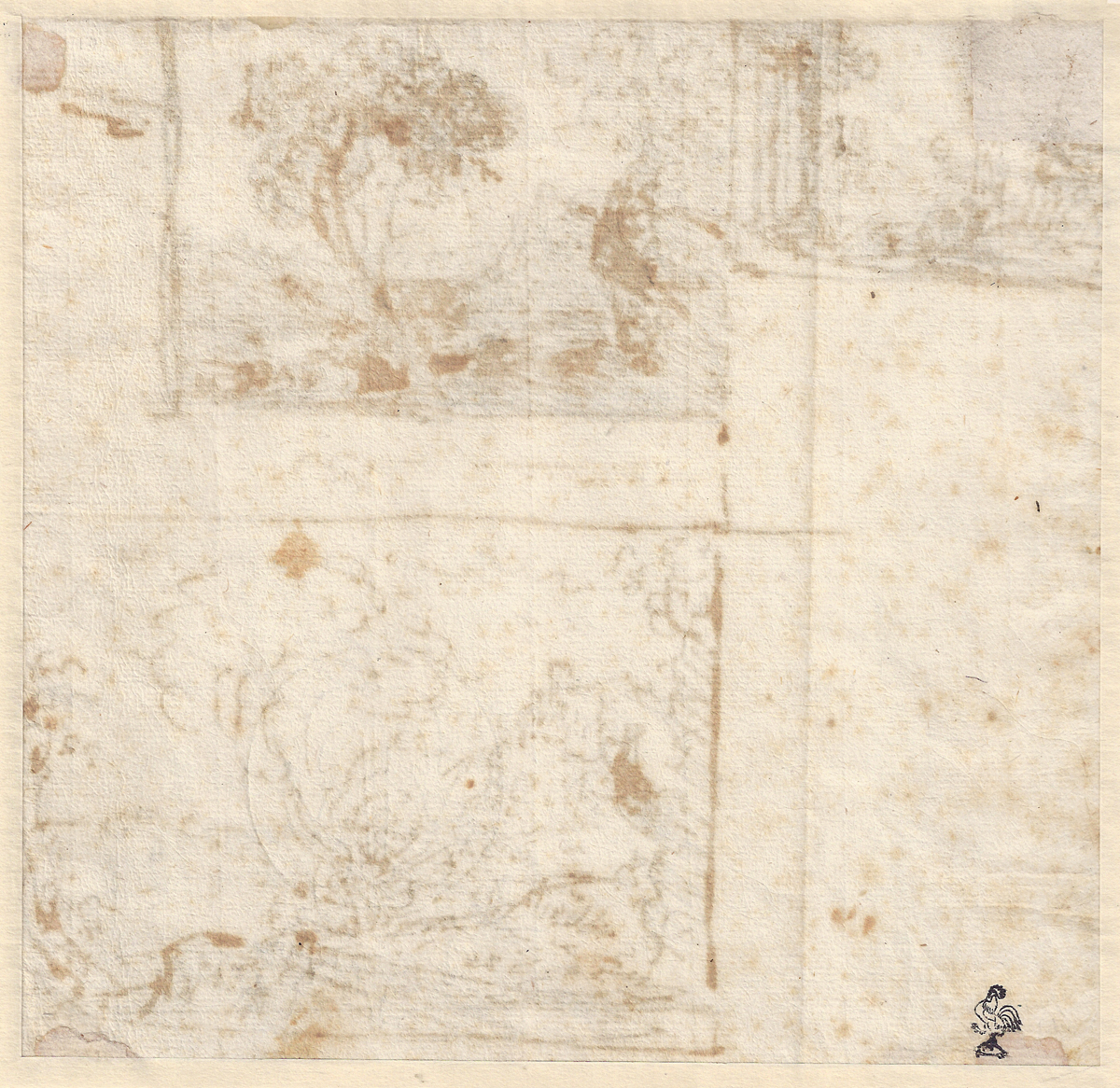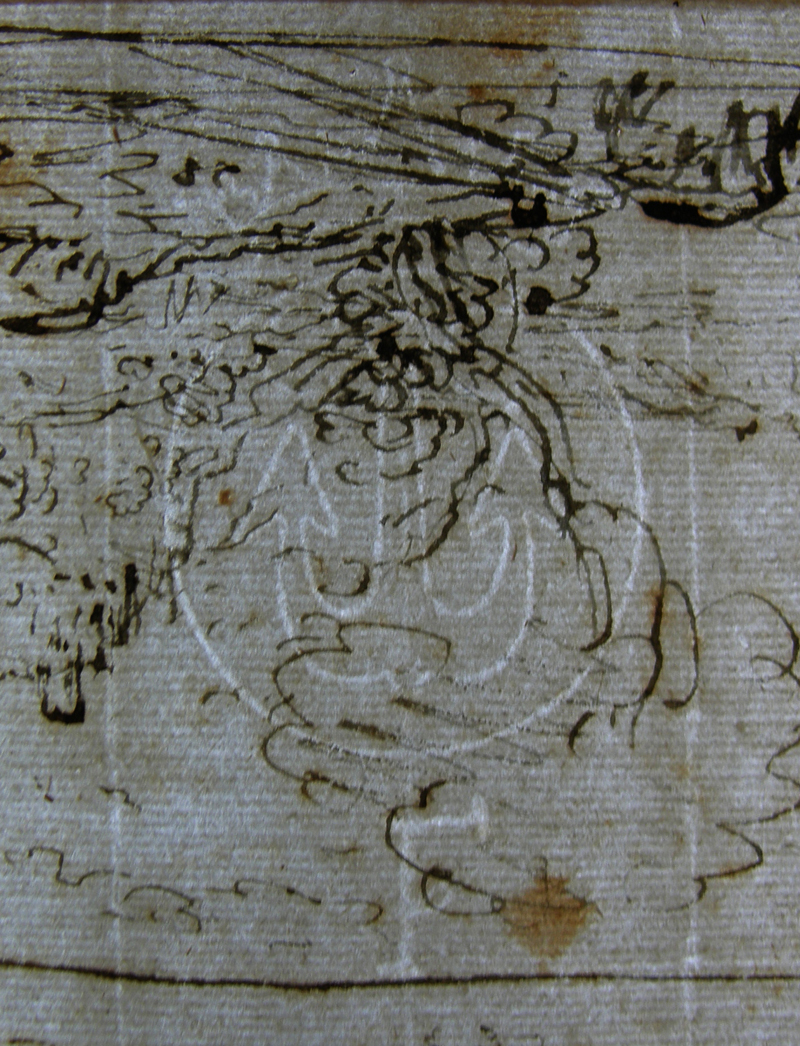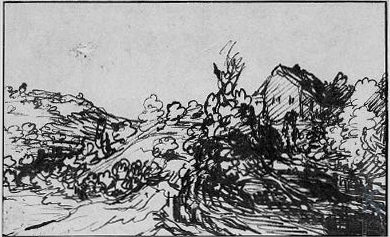Attributed to HENDRICK GOUDT (Utrecht c. 1583 – 1648 Utrecht)
Attributed to Hendrick Goudt (Utrecht c. 1583 – 1648 Utrecht)
Sheet with Three Studies of Italianate Landscapes with Ruins
Pen and brown ink, watermark anchor in a crowned circle with letter F below, 188 x 194 mm (7.4 x 7.6 inch)
Provenance
~ Dr C.R. Rudolf (1884-1974) (L. 2811b)
~ Anonymous sale, Christie’s, Amsterdam, 9 November 1998, lot 60, repr.
***
Hendrick Goudt was born in Utrecht. According to Arnold Houbraken, he was in Rome at the same time as Adam Elsheimer (1578-1610) and the two struck up a lasting friendship. Goudt was profoundly influenced by Elsheimer’s work and the paintings and drawings of the two artists have often been difficult to distinguish. Upon his return in The Netherlands, Goudt made a series of prints of Elsheimer’s work. Houbraken wrote that he was given an aphrodisiac in 1624 by a young lady who wished to marry him, and this addled his brain to the point that until his death he could only discuss art topics coherently. Goudt’s drawings were collected by Rembrandt, who was greatly influenced by their spontaneous handling.
The present drawing is typical of a small group of landscape studies from the Goudt-Elsheimer group.1 Comparable are a small landscape in a private collection in Stuttgart (fig.)2 and another small landscape in Munich,3 both attributed to Goudt. A Wooded Landscape by Elsheimer in Berlin however shows similar delineation of the trees.4
It has been suggested that our drawing could have been part of an album recording painted landscapes. As the three compositions are all different this does indeed seem plausible, rather than their being separate compositional thoughts in preparation for a painting, for which they are too diverging. Although few of these ricordi are known today, the practice seems to have been more common in the 17th century; the best-known example is Claude Lorrain (c.1600-1682), who systematically recorded his paintings in a drawn Liber Veritatis. The three diagonally-oriented landscapes in our drawing are reminiscent of Elsheimer’s Roman landscapes produced from 1600-1610.
SOLD
1. For the issue of distinguishing between the two artists, see W. Drost, Adam Elsheimer als Zeichner. Goudts Nachahmungen und Elsheimers Weiterleben bei Rembrandt. Ein Beitrag zur Strukturforschung, Stuttgart 1957.
2. 100 x 160 mm; see exh. cat. Zeichnungen aus fünf Jahrhunderten. Eine Stuttgarter Privatsammlung, Stuttgart ( Staatsgalerie Stuttgart) 1999, no. 68, repr.
3. 52 x 133 mm; Staatliche Graphische Sammlung, Munich, inv.nr. 1999:30.
4. Executed c. 1602/03, 176 x 265 mm; Staatliche Museen, Berlin; see K. Andrews, Adam Elsheimer, Werkverzeichnis der Gemälde, Zeichnungen und Radierungen, Munich 2006, no. 27, repr.
